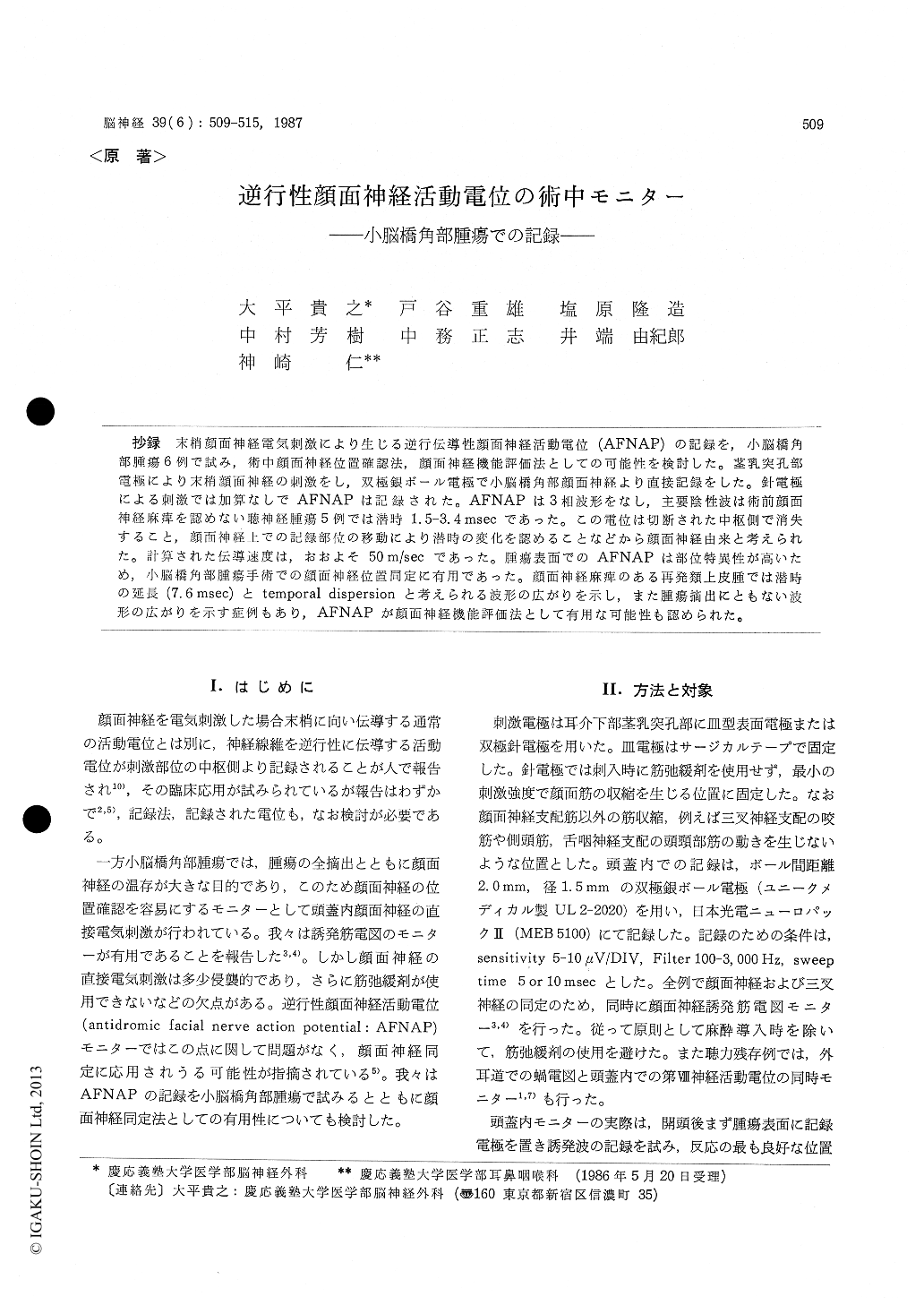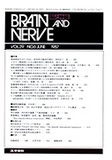Japanese
English
- 有料閲覧
- Abstract 文献概要
- 1ページ目 Look Inside
抄録 末梢顔面神経電気刺激により生じる逆行伝導性顔面神経活動電位(AFNAP)の記録を,小脳橋角部腫瘍6例で試み,術中顔面神経位置確認法,顔面神経機能評価法としての可能性を検討した。茎乳突孔部電極により末梢顔面神経の刺激をし,双極銀ボール電極で小脳橋角部顔面神経より直接記録をした。針電極による刺激では加算なしでAFNAPは記録された。AFNAPは3相波形をなし,主要陰性波は術前顔面神経麻痺を認めない聴神経腫瘍5例では潜時1.5-3.4msecであった。この電位は切断された中枢側で消失すること,顔面神経上での記録部位の移動により潜時の変化を認めることなどから顔面神経由来と考えられた。計算された伝導速度は,おおよそ50m/secであった。腫瘍表面でのAFNAPは部位特異性が高いため,小脳橋角部腫瘍手術での顔面神経位置同定に有用であった。顔面神経麻痺のある再発類上皮腫では潜時の延長(7.6msec)とtemporal dispersionと考えられる波形の広がりを示し,また腫瘍摘出にともない波形の広がりを示す症例もあり,AFNAPが顔面神経機能評価法として有用な可能性も認められた。
A method of recording the antidromic facial nerve compound potential (AFNAP) is presented. When the facial nerve is stimulated, a compound action potential is propagated in both directions from the stimulating site. We recorded AFNAP's in 6 cases of cerebello-pontine angle (CP angle) tumors (5 acoustic neuromas and one epidermoid) using a bipolar silver ball-type electrode directly put on the facial nerve in CP angle by stimulationof the peripheral facial nerve at the stylomastoid foramen. It was neecessary to use needle electrodes instead of surface ones for stimulation to keep the artefacts from stimulating currents within rea-sonable bounds. Good contact of the electrode tips with facial nerve was required to get clear action potential. By stimulation with needle electrodes AFNAP's were recorded without averaging and had a good reproducibility. AFNAP's were typical triphasic potentials and the major negative peak latencies were observed from 1.5 to 3.4 msec except one case of recurrent epidermoid whose major negative peak latency was 7.6 msec. It was verified that these potentials were the results of facial activity, because they were recorded exclu-sively on the facial nerve, they could not be record-ed at the proximal end of the sectioned facial nerve, and alterations of latency were observed with changing the position of recording electrode along the facial nerve. A calculated conduction velocity was about 50 m/sec.
It was thought that recording AFNAP facilita-ted the identification of the facial nerve on the surface of the CP angle tumor, because the ampli-tude of AFNAP decreased immediately when the recording electrodes were off from the facial nerve. The case of recurrent epidermoid with preoperative facial palsy showed broadened shape of AFNAP with prolongation of the latency, and in one patient of acoustic neurinoma AFNAP after dissection around facial nerve showed more broadened shape dissection. Broadend shape showen in these two cases was thought to be temporal dispersion. From those findings it is expected that monitoring AFNAP might be a useful technique to evaluate facial nerve function intraoperatively.

Copyright © 1987, Igaku-Shoin Ltd. All rights reserved.


